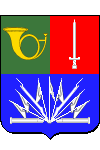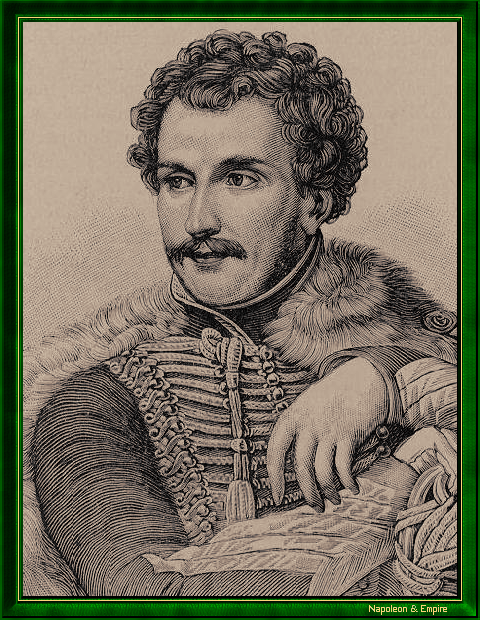Yrieix-Pierre Daumesnil
Baron of the Empire
Pronunciation:

Yrieix-Pierre Daumesnil was born on July 14, 1776 (or 1777, depending on the source) in Périgueux to a father who was a wigmaker but a former soldier.
In 1794, he joined the cavalry of the Pyrénées-Orientales army. The following year, he was transferred to the Italian cavalry, where he joined the company of guides.
During the Egyptian campaign, he distinguished himself brilliantly by seizing the standard of the Turkish capitan-pasha at Abukir, and above all by saving Napoleon Bonaparte's life on two occasions. Bonaparte took him back with him to France, where he joined the chasseurs à cheval of the consular guard. A few months later, Daumesnil was promoted to second lieutenant (May 6, 1800), then lieutenant a few weeks after Marengo, and captain in 1801. He then had to wait four years for the resumption of hostilities in Europe and the promotions that followed Austerlitz before being promoted to squadron leader.
He then took part in the Prussian and Polish campaigns of 1806-1807, fighting at Jena (October 14, 1806), Eylau (February 8, 1807) and Friedland (June 14, 1807). After a short spell in Spain, during which he confronted the insurgents of May 2, 1808 in Madrid, he followed the Emperor to Germany, where a promotion to colonel-major awaited him after Eckmühl (April 22, 1809). Wounded once during this battle, he was wounded again at Wagram (July 5-6, 1809), so seriously that his left leg had to be amputated. His health having recovered, his career continued despite this handicap.
Dausmenil was made a Baron d'Empire in 1810 and promoted to Brigadier General in 1812. In the same year, he was given command of the Château de Vincennes, a position that would make him a living legend.
In 1814, after the Campaign in Northeast France and the surrender of Paris, he gathered all the equipment abandoned on the heights of the capital in the fort, refusing to hand it over to the enemy as stipulated in the agreement. The allies stumbled over his intransigence for several weeks. King Louis XVIII himself, while stripping him of his command, saluted his courage and determination by awarding him the Cross of Saint-Louis.
In 1815, Daumesnil rallied to Napoleon's side immediately after the King's departure, and immediately regained his command. After the second abdication, he again refused to hand over the equipment entrusted to his guard, threatening to blow himself up rather than surrender. It was only five months later, after resisting with less than two hundred men and during which he had the audacity to make several sorties, that he agreed to surrender. This time, however, he surrendered the fortress to the Bourbon troops, leaving under the protection of the tricolor flag. This time, he was retired.
In 1830, Louis-Philippe rescued him and once again granted him the command to which Daumesnil's name was henceforth attached. This time, he was entrusted with the custody of Charles X's ministers awaiting trial, and once again proved to be uncompromising in the performance of his duties. A popular riot in December 1830 demanded the heads of his prisoners. They belong only to the law, you'll only have them with my life
replied the governor.
Daumesnil died of cholera on August 17, 1832, in Vincennes. His final resting place is in the town's cemetery . Also in Vincennes, a bronze statue honors his memory on the Cours Marigny.
"General Daumesnil". Nineteenth Century engraving.

Daumesnil's courage was matched by his flair for words. To Blücher, who summoned him to return the château, he replied: Give me back my leg, and I'll give you back the fort!
Later, when someone tried to bribe him by offering millions for his surrender: My refusal will serve as a dowry for my son
.
A bronze statue honors his memory downtown.
His infirmity earned Daumesnil the nickname La jambe de bois.
In 1976, on the occasion of his bicentenary, the Post Office of the French Republic issued a 1.00 F + 0.20 F stamp bearing the general's effigy.
Daumesnil's name is inscribed on the north face of the Arc de Triomphe de l'Etoile.